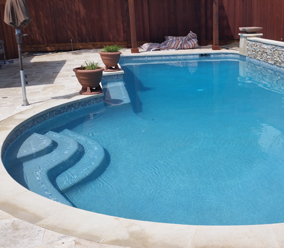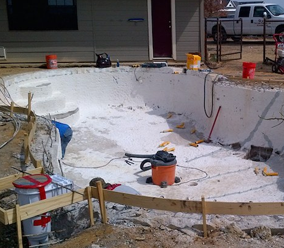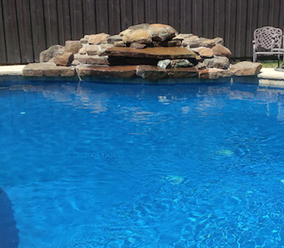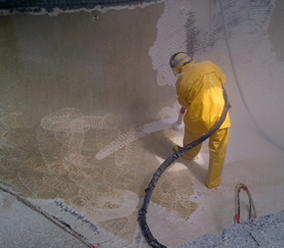Are you planning to invest in a pool replaster? If so, the best decision would be to choose a plaster finish that will last longer than the current plaster has lasted in your pool. Choosing white plaster is not a good investment for a pool replaster. White plaster will not last more than 5 years. By that we mean when it is 5 years old, it will look double its age and be nearly worn out in visual appearance. The companies that offer white plaster in the Dallas-Ft. Worth area will be the same companies guaranteed to be using a homebrew bond coat to improperly secure your investment to the substrate.
The most important part of a pool replaster is the surface preparation. How will the new plaster be bonded to the substrate? Most companies think this is the least important part of a replaster. Most, if not all of them, use homebrew bond coats. The primary component of homebrew bond coats is glue. Cheap glue. Companies use homebrew bond coats to be able to save the most money possible on their replaster jobs. They use the cheapest glue they can get. They use glue that is not designed to be submerged in water.
Pool plaster is not waterproof. It is water tight. Pool plaster is semi-permeable, water will get to the back of the plaster. Once water gets through the plaster, it goes to work on the worthless homebrew bond coat. If by chance the plaster was bonded to the homebrew bond coat, the water will re-emulsify it. That means your plaster is no longer secured to the pool shell. A hollow spot will develop. Water will continue to separate the plaster bond and discolor the new pool replaster investment. Overtime unexplained water loss, stains, and black algae will develop.
Homebrew bond coats must be removed from our industry. They simply do not work. The companies that use them do so to save money for themselves, not for the pool owner. If you get a quote for pool replaster, demand that they give you a 5 year warranty. Otherwise what is the point of spending your money with them?










